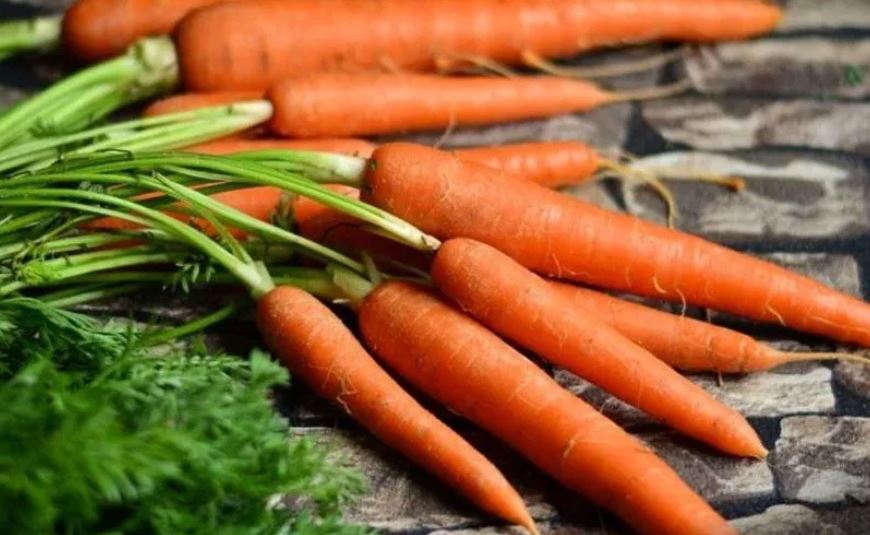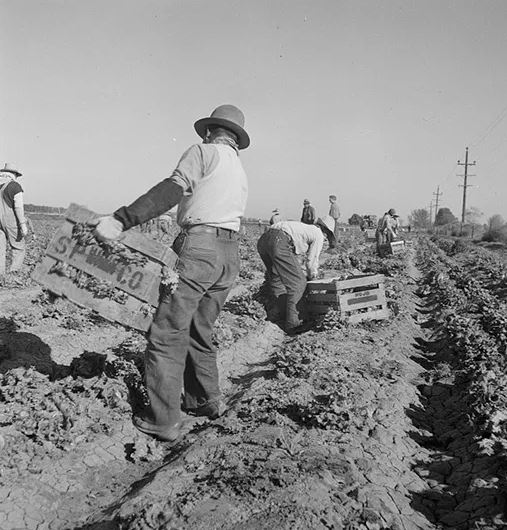 By Cap Allon
By Cap Allon
Grow your own carrots — they’re a homesteading staple.
We get through hundreds of the things over the course of a year.
They are good straight from the ground, raw, and add a great nutritious element to any meal — carrots are a superb source of beta carotene, fiber, vitamin K1, potassium and antioxidants.
The green tops can also be used — they taste great in a salad, can make a delicious pesto, and can be sautéed in salted butter to have on toast.
The carrots that we grow are the heirloom varieties “Nantes 2” and “Chantonnay” (heirloom varieties are essential if you plan on saving your own seed –more on that later– plus they taste better).
Sowing and Growing Carrots
Carrot seeds have a poor germination rate, and on top of that can take as long as 14-21 days to sprout. Sowing should be done direct outside as carrots do not fare well when transplanted — doing so will result in poor, stunted growth.
Carrots grow best in cooler temperatures: ideally, nighttime temps should climb no higher than 13C (55F) with daytime highs averaging less than 24C (75F)–but, as always, try things out and see what your area/soil/conditions lets you get away with.
We have very hot summers here in Portugal, and carrots just simply do not grow in the 40+C (104+F) heat (I’ve tried it). However, we are fortunate enough to have a very long growing season. We can achieve two carrot harvests a year: the first we sow early-Feb (after the threat of frost has passed) which is ready by late-spring, and the second is sown late-summer (once the heat has subsided) and is ready in November.
As carrots are quick to grow and mature one option is to succession plant seeds every 2-or-so weeks through until Autumn for a continuous fresh harvest.
Carrots require well-draining, loose and fertile soil. If you try to grow in heavy, stony soil the carrots will be small, stunted and unevenly shaped.
We sow our carrots in rows 20-25cm ( 8-10 inches) apart.
Seeds are sown thinly along the rows, then covered by a modest layer of compost and watered in.
How To Grow Half Of Your Own Food (Ad)
A line of organic mulch is prepared alongside the bed, ready to be pull-in around the plants once they’ve reach around 10cm (4 inches) in height. Note: carrot seeds will be smothered and won’t germinate if a *thick* layer of mulch is added too soon.
Another job to do when the plants are 10cm (4 inches) tall is thinning.
While keeping a few plants close together is fine –the biggest of which you can harvest early and allow the others to grow on – it is a good idea to give plants enough space to develop fat and healthy roots: a distance of 2.5-5cm (1-2 inches) between plants/small groups of plants will suffice.
It is especially important when the carrots are small to keep the patch free from weeds. Undesirable plants springing up in your carrot bed will absorb important nutrients and water which results in poor root growth.
A good layer of mulch will assist with this job (note: be careful when weeding and thinning not to disturb the carrot tops, as the smell will attract carrot fly. Covering your patch with fleece may be necessary if these pests are particularly prominent in your area).
Harvesting Carrots
Depending on your variety and growing conditions, carrots will take anywhere from 2 to 4 months to mature.
Pick as soon as they are large enough to use. Don’t aim for the largest roots or you’ll sacrifice flavor.
Tip: carrots taste best after a touch of frost has hit.
Gently lift carrots from the soil by hand where possible.
If they don’t come up easily then loosen around the roots with a hand fork to avoid doing any damage — any bruised or forked carrots should be eaten first as they will not store well.

Overwintering Carrots
One simple option is to leave your carrots in the ground over winter to harvest as-and-when needed.
The cold of winter will kill off the carrot greens, but the roots will hold fine underground.
This option is possible where winter temperatures don’t dip too low, but for areas where the odd deep freeze is experienced you can protect your carrots with a thick layer of mulch.
However, harvesting the entire crop for storing indoors is often the best bet.
Note: if you do overwinter your carrots outdoors be sure to harvest them early the next season, before they sprout new tops as this will cause the roots to become woody and inedible. Also, carrots that have been overwintered will not store well, and should be eaten quickly.
Storing Carrots
Leaving carrot tops attached will draw moisture and flavor from the roots and they won’t keep as long, so be sure to remove these before storing.
Also, brush off any excess soil but do not wash them as the dirt will act as protection from bacteria.
If you search online you’ll find various over-complicated methods for storing carrots, but the best option we’ve found is also by far the simplest: we store our roots in crates or boxes (with good air circulation) stacked in a relatively cool and dark spot.
For us this is in our insulated “slab hut” (aka shed). The temp in there holds pretty consistent, particularly during the cooler months — and that’s the only time we want carrots stored for any extended period of time as our late-spring harvest will easily last the short (though admittedly extreme) summer weeks without perishing.
We looked into root cellars and boxes of sand, etc., but storing our carrots using this simple method works great, and is completely faff-free — as always, look for the simplest option.
In an attempt to make Electroverse more practical I’ll occasionally suggest products I deem essential additions to your prepping arsenal — these will only-ever be items I’ve personally purchased and found useful, during my own prep, and they will come in the form of paid links (as an Amazon Associate I earn from qualifying purchases).
Heirloom seeds, such as these Survival Garden Seeds, are a great place to start.
Heirlooms are old-time favorites that produce plants with the exact same traits planting after planting, season after season, generation after generation — some heirloom seeds date back hundreds of years, or more.
Saving seeds from a hybrid variety –such as you would buy from most garden centers– would mean that the second generation you grow isn’t guaranteed to produce the same “true to type” plant.
Therefore, if seed saving is your aim –which is should be given the uncertain times we’re entering where the garden stores aren’t guaranteed to stay stocked/open– then building your own heirloom (sometimes called heritage) seed vault is essential.
For more on that, see:
Visit Cap Allon at Electroverse.net where this article first appeared. Follow on Facebook, on Instagram, and on Twitter. And please support his work at Patreon here.
Source link
[ad_2]
source https://earn8online.com/index.php/301232/grow-your-own-carrots/
No comments:
Post a Comment